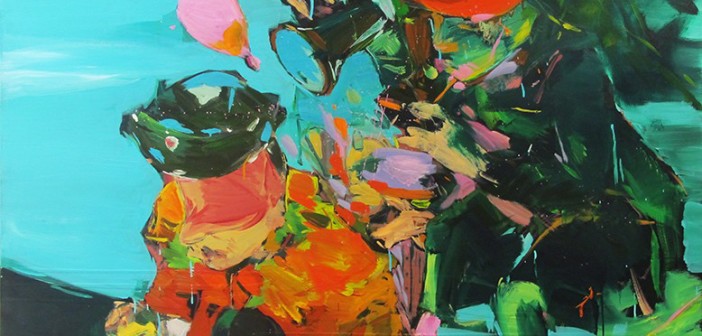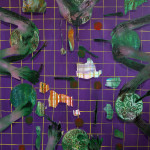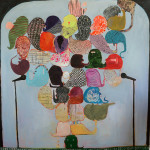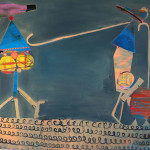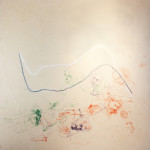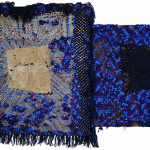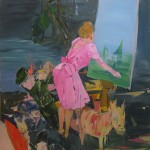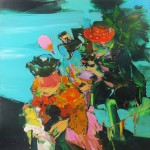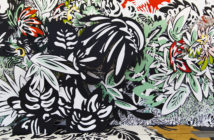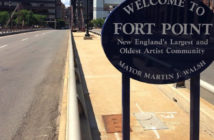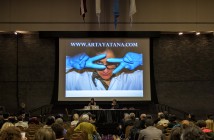.......................................................................................
Boston University Master of Fine Arts Exhibition
Boston University is renowned for its strength in painting. And rather excitingly, over the past few years we've been treated with MFA exhibitions that are balanced between superb 2D and 3D work representing and referencing a diverse range of styles, influences, and materials. As was last year, this group's offering was strongest when it came to painting and those who seemed to be creating the most daring work were doing so through layers of rich content. While some of the work shown felt repetitious and even confined by its medium, three voices stuck out and have been firmly lodged in my mind since the opening.
Giovanni Giacoia
When constructing a personal and artistic identity, what does one do with their heritage? How is it reconciled as part of one's past experiences, current identification, and intuition? An Italian native, Giovanni Giacoia uses this conceptual backdrop in his work to explore his personal relationship to society and culture. Many of his paintings signify a personal proto-renaissance coded with symbols, narratives, and "romances of the subliminal imagination"1 while steeped in the language of classical modernity. Supported by traditional compositional lattices and grids, many of the structures and figures in Giovanni's paintings have a feeling of precarious instability and inevitable collapse—though never fully destroyed, they, like one's understanding of self, are subject to the passing of time and the conflation of memory.
See more of Giovanni's work at www.giovannigiacoia.com
Hoda Kashiha
Born and raised in Iran, Hoda Kashiha received her BA in painting from the University of Tehran in 2009 before moving to Boston to pursue her Masters degree at BU. Her work, which has evolved from calligraphic figural masses on paper, now fills large canvases that have a purposefully fetishized European-ness in composition, structure, costuming, and environments. Abstracted non-specific natural locations reminiscent of paintings made en plein air create a suitable setting for Hoda's charlatan leaders and heroes to play out their corrupted power dichotomies, exposing the barbarism and hypocrisy of humanity even among the West's cultured and elite.
See more of Hoda's work at www.hodakashiha.com
Tuo Wang
Presented in a somewhat overwhelming layering of multidisciplinary visual cues, Tuo Wang's thesis is structured around themes of transience and mortality. Among a sequence of videos, narrative texts, and objects are a series of large canvases that are most evocative of the temporality of vanitas. They appear both as ghosted objects and physical records of time—transfers of fabrics from illusory performances and successive outlines of bodies in performative acts—resulting in eidolic images of forgotten experience.
See more of Tuo's work, including his videos at www.tuo-wang.com
The 2014 Boston University School of Visual Arts MFA Thesis Exhibition runs from April 11 - 27 at the 808 Gallery at Boston University, 808 Commonwealth Avenue.
[1] A phrase that 19th century psychology professor Théodore Flournoy used to describe automatic writing (another element which can be found in Giovanni's work, most visible in the painting Standing Over Italian Conjunctions, pictured above).

